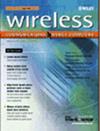基于双天线的超高频射频识别交叉检测
4区 计算机科学
Q3 Engineering
引用次数: 0
摘要
越界检测是对人或物是否越过给定的界线进行检测,这在我们的日常生活中是非常常见和重要的,例如零售商店的电子物品监控(EAS)检查站或田径比赛的终点线。虽然现有的线交叉检测方案已经取得了很大的进步,但当多个物体或人同时越过线时,它们的效果并不好。在本文中,我们提出了一种新的基于射频识别(RFID)的解决方案,称为射频线对线交叉检测,特别适用于多目标场景。最大的挑战是RFID阅读器的覆盖区域是不可见和不规则的;我们不能把阅读器第一次看到标签的时间粗略地看作是发生交叉的时间。在RF- line中,我们将两根天线相对放置,同时采集两根天线的射频相位曲线。通过一系列的几何变换和数学推导,我们发现将两个相位曲线相加可以得到一个新的相位曲线,曲线的拐点为直线相交时间。此外,我们还解决了返回或长时间停留在隔离线上的问题。我们在商品RFID系统中实施RF-Line。大量的实验表明,RF-Line可以实现精确的线交叉检测,误差很小,为6.1 cm,无需任何系统校准或复杂的部署。本文章由计算机程序翻译,如有差异,请以英文原文为准。
Dual Antenna-Based Line Crossing Detection with UHF RFID
Line crossing detection is to check whether people or objects go across a given barrier line, which is quite common and important in our daily life, such as the electronic article surveillance (EAS) checkpoint in a retail store or the finish line in track and field. Although existing solutions to line crossing detection have achieved great advancement, they do not function well when multiple objects or people cross the line at the same time. In this paper, we propose a new radio frequency identification (RFID)-based solution called RF-Line to line crossing detection, especially for multiobject scenarios. The biggest challenge is that the RFID reader’s coverage zone is invisible and irregular; we cannot roughly take the time when a tag is seen by the reader for the first time as the time when line crossing occurs. In RF-Line, we deploy two antennas opposite to each other and collect the RF phase profiles of two antennas at the same time. By a series of geometric transformations and mathematical derivations, we find that summing up the two phase profiles will get a new phase curve, in which the inflection point of the curve is the time of line crossing. In addition, we address the problem of turning back or long stay on the barrier line. We implement RF-Line with commodity RFID systems. Extensive experiments show that RF-Line can achieve accurate line crossing detection with a small error of 6.1 cm, with no need for any system calibration or complicated deployment.
求助全文
通过发布文献求助,成功后即可免费获取论文全文。
去求助
来源期刊
自引率
0.00%
发文量
2475
审稿时长
9.9 months
期刊介绍:
Presenting comprehensive coverage of this fast moving field, Wireless Communications and Mobile Computing provides the R&D communities working in academia and the telecommunications and networking industries with a forum for sharing research and ideas.
The convergence of wireless communications and mobile computing is bringing together two areas of immense growth and innovation. This is reflected throughout the journal by strongly focusing on new trends, developments, emerging technologies and new industrial standards.

 求助内容:
求助内容: 应助结果提醒方式:
应助结果提醒方式:


